Home » Posts tagged 'Academic life'
Tag Archives: Academic life
Reflections from CHIWORK 2025: My First Conference as a PhD Researcher
By Sarah Frampton
This week I had the privilege of attending CHIWORK in Amsterdam – my first conference since starting my PhD. It was energising to be surrounded by researchers who are not only asking difficult questions about the role of AI in the future of work, but also pushing for a deeper understanding of what we should automate versus what we must preserve, support, or augment in human labour.
A personal highlight was the chance to share and reflect on my own work in conversation with the brilliant Marios Constantinides and Cristina Zaga as well as fellow students. Their thoughtful questions challenged me to examine why the problem of hidden mental load in family life, the invisible, value-driven coordination so often carried by one person, is one that might be meaningfully supported by digital tools, rather than other forms of intervention.
I’m leaving with a notebook full of provocations, encouragement, and ideas, and a deep sense of gratitude for this community.
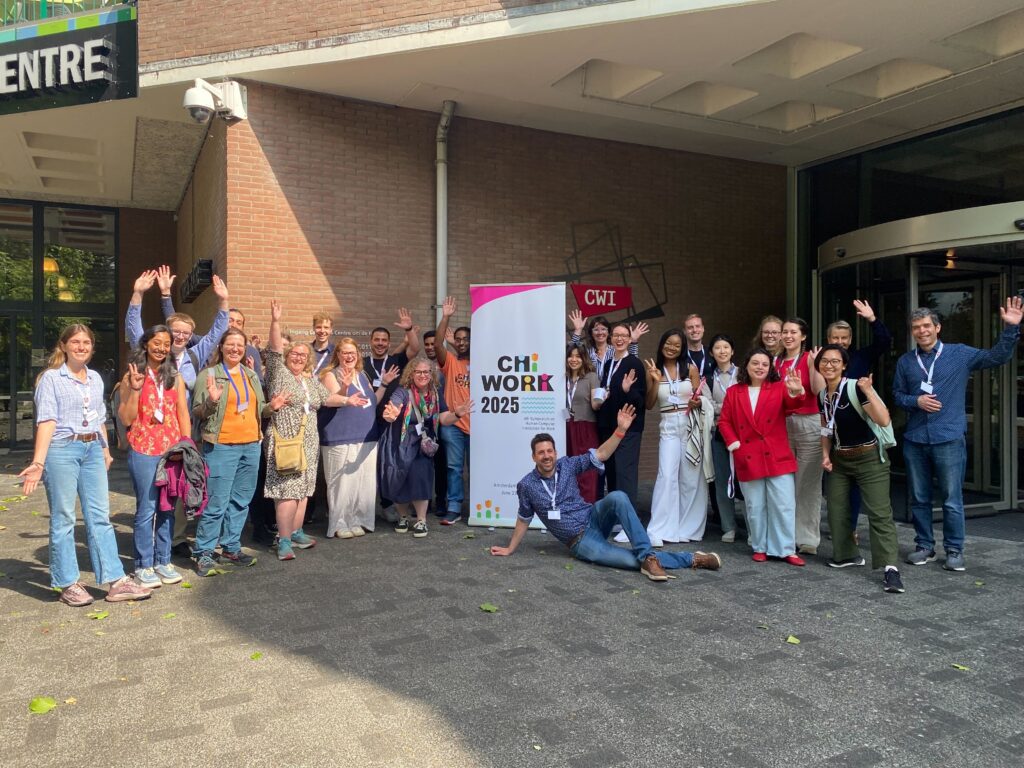
CHIWORK’24 Experience by Yoana Ahmetoglu
CHIWORK is an annual symposium focused on how HCI will support future work. This year, the CHIWORK’24 symposium was hosted by the University of Northumbria in the charming city of Newcastle-Upon-Tyne. There are quite a few cool-looking bridges over the river and across the city

I arrived in Newcastle with an early train from London and enjoyed the beautiful English countryside. Pro tip: the view of Durham Castle from the train is stunning and worth every second of window-gazing. Unfortunately, I did not manage to capture it as I was absorbed by the view but here is a photo from the web. It was a great train ride.

The first event was the student’s consortium where twelve students talked about their research experience, interests and got feedback and advice from mentors, such as Advait Sarkar from Microsoft, Andrew Kun from University of New Hampshire, Carine Lallemand from University of Luxemburg, and others. We presented posters to all attendees of the conferences and got to know each other better. Here is me talking about the studies I’ve conducted during my PhD.

What set this consortium apart was its inclusivity. Unlike typical events focusing solely on doctoral students, this one welcomed student from all levels. I met Audrey Chang from Harvard, an undergraduate student interested in democratizing knowledge who gave me great feedback on my own ideas. Interacting with students from all levels must surely be great for fostering research creativity.
In my talk during the consortium, I reflected on my doctoral journey, now in its fourth and final year, and raised questions about the skills to develop considering the recent AI boom. Horia Maior encouraged me to embrace my unique interdisciplinary expertise and rely on my broad skill set, which, while not easily labeled, allows me to identify and explore HCI research questions. This encouragement made me feel accepted and reassured me. Even if all I got out of the conference was this feeling, it would have been worth it. However, I gained so much more.

During discussions with mentors, I had a brief conversation with Carine Lallemand (in the photo above), who questioned the specific user experience I am designing for. These discussions were among the first to address a common theme: what does it mean to design for worker-centric productivity? Throughout the conference, I was pleasantly surprised to find a consensus on the importance of focusing on wellbeing at work. This includes considering health, work-life balance, and overall job satisfaction as crucial elements of productivity. Realizing that the “HCI for work” community strongly prioritizes these values made me feel a strong sense of belonging to this community.
The first day was followed by an opening key-note speech and a conversations panel, providing a great mix of experiences. My research presentation was during the second day. In our paper, we studied the functionalities which are useful for supporting users of to-do list apps to make more realistic plans. You can read more about this study here.

I thoroughly enjoyed giving the talk and engaging with the questions that followed. It was encouraging to hear from attendees who shared that they enjoyed the presentation. That’s another great thing about attending and presenting at conferences – you get to feel appreciated and valued by the broader community.
During the breaks, we shared lunch and coffees, and presented posters about our doctoral research. The size of the conference was just right to be able to get to know most people well enough (50 attendees).

One of the interesting presentations of the day was about “Trinity: A Design Fiction to Unravel the Present and Future Tensions in Professional Informatics and Awareness Support Tools” by Carine Lallemand and her co-authors. This study introduces Serenity, Affinity, and Capacity—three AI-driven tools. Serenity is like your personal wellbeing coach, monitoring stress and heart rates to keep you zen. Affinity acts as the ultimate team therapist, tracking moods and engagement to ensure everyone is on the same page. Capacity, the productivity guru, keeps tabs on project progress and potential risks, like a bossy but helpful project manager. The narrative humorously shows scenarios where these tools blend into daily work, making us really think (and often laugh) about the tech-driven future of collaboration.
Another interesting study was “Non-Expert Programmers in the Generative AI Future” by Molly Feldman and Carolyn Anderson. This study looks at how AI tools that turn natural language into code can help people who aren’t trained programmers. They studied non-programmers and found that while these tools are promising, beginners struggle with technical language and understanding the code that AI generates. The study also showed that regular computer science classes don’t fully prepare students to use these AI tools. The authors suggest focusing on teaching “code-building” skills, so more people can use AI to create and tweak code easily, making programming more accessible for everyone.
I had several chats with Molly, the author of the paper, who is a kind-hearted and warm person. She gave me useful advice on how to start getting myself educated in LLMs, for example, by learning the terminologies (as opposed to the tech side of things) and by taking a course specifically dedicated to LLMs that may be introduced in the coming fall term. I came out of the conference feeling prepared with more specific long-term goals.

The conference concluded with a town hall where all attendees got a chance to express their ideas about the future of the conference itself, reinforcing the sense of inclusivity. We also got to learn about how the conference came about, and after the closing key-note speech, we found out where next year’s conference will be and how to get involved in helping organize it.
CHIWORK’24 was a great experience, filled with inspiring talks, meaningful connections, and plenty of laughs. I left Newcastle feeling motivated, valued, and ready to dive back into my research with fresh ideas and perspectives. ‘Till next year in Amsterdam!
CHIWORK 2024 trip – a blog post by Shiping Chen
This year, I attended CHIWORK 2024 at Northumbria University in Newcastle from June 25 to June 27 2024+.. As my first in-person conference, it turned out to be an incredibly rewarding and unforgettable experience for me.
Discovering Newcastle: My First Visit
To prepare for the full conference program, I arrived in Newcastle a day early and had the chance to explore its beautiful scenery. From the moment I arrived, the city’s unique blend of historical charm and modern vibrancy captivated me. The stunning architecture of landmarks like the Tyne Bridge and the beautifully preserved Georgian and Victorian buildings added a distinctive character to the cityscape. The Quayside, with its lively atmosphere and picturesque views of the Sage Gateshead and Millennium Bridge, quickly became one of my favourite spots. Wandering through the streets and capturing these sights in photographs, I felt a genuine connection to the city’s rich history and culture. Spending the evening in the city heightened my anticipation for the upcoming conference events.
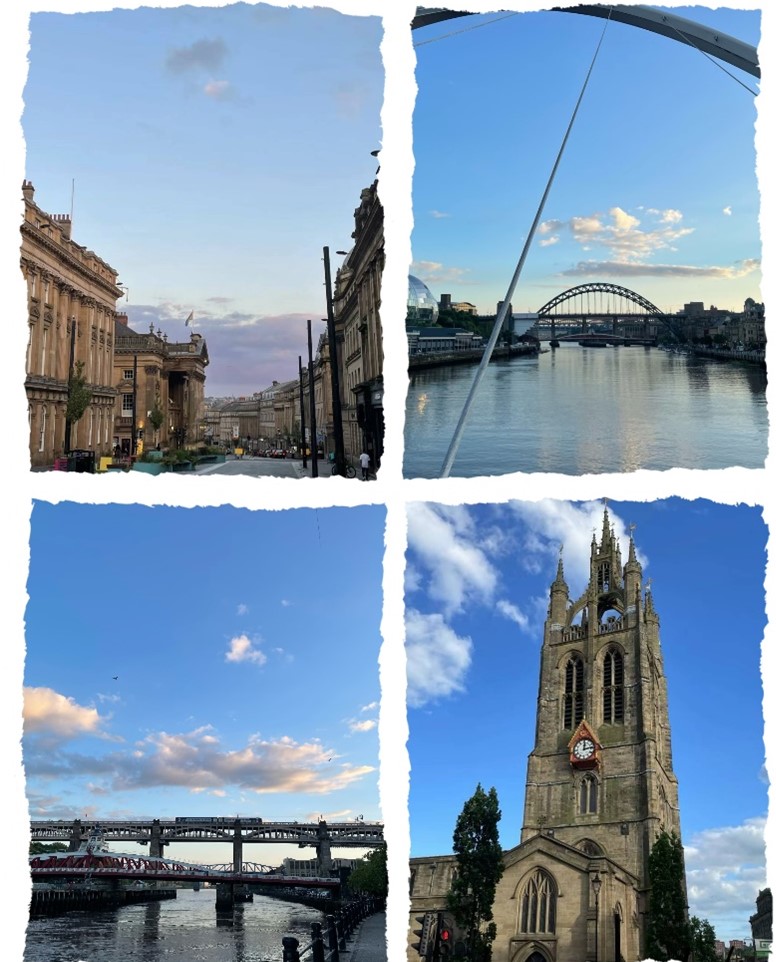
Figure1. Photos I took on my first day in Newcastle.
Student Consortium: A fantastic opportunity to kick off the conference and network with other early career researchers
The first event I participated in CHIWORK was the student consortium, which took place on June 25 from 9:00 to 12:30. It was a great opportunity to meet other PhD students from all over the world and discuss each other’s research for peer feedback. I appreciated the well-organized activities during the Student Consortium, which included self-introductions, group discussions, one-on-one feedback session, and fireside chat with mentors. These activities made it easy for us to get to know each other and start conversations. The groups were divided based on research topics, facilitating the exchange of constructive feedback and ensuring that everyone could both provide and receive valuable insights.
I was part of the group focused on Innovative AI Applications and Assessment with three peers: Ruotong Wang from the University of Washington, who focuses on designing socially grounded AI applications to support team communication in remote work settings such as Zoom meetings and Slack chats; Teshan Bunwaree from Cardiff University, who works on the multidisciplinary assessment of bossware, aiming to provide recommendations for bossware technology in the workplace by integrating knowledge from law, organizational psychology, and technology; and Pranjal Jain from Swansea University, who researches capturing tacit knowledge, primarily through reflective technologies that enable digital systems to record and analyse experts’ decision-making processes.
During our discussions, we shared our research experiences and skills in conducting user studies. We also talked about the journey of a PhD student in different countries. I found these conversations very interesting and rewarding. Hearing about the diverse approaches and challenges my peers faced at their respective institutions broadened my perspective. We were also fortunate to be joined by two mentors, Dr. Advait Sarkar from Microsoft Research and Prof. Andrew Kun from University of New Hampshire. The exchange of ideas and methodologies with them helped me refine my current project. I gained valuable insights from their suggestions, particularly on how to utilize current AI models to build AI tools. Advait mentioned their paper about participatory prompting, which I will describe in more detail in the next section. This advice was especially relevant to my own PhD project, during which I plan to design a generative AI tool to help people review papers more effectively.
I also enjoyed my one-on-one chat with Ciabhan Connelly and the fireside chat with all the mentors. Ciabhan, from Georgia Tech, studies how to mitigate the spread of misinformation and hateful ideologies in online communities, particularly misogynistic ones. We talked about our studies in turn, and then discussed potential solutions and the mixed methods we use in our research. The fireside chat with all the mentors provided a wonderful closure to the Student Consortium. The fireside chat offered us the chance to ask questions and gain valuable advice from experts in both academia and industry. I found the advice on choosing between an academic or industry career and tips for finding academic positions particularly helpful to me. Additionally, learning about the differences in recruitment timing, reference letters, and language requirements between the US, UK, and Europe was incredibly informative.

Figure 2. Photo taken at the end of the Student Consortium. My supervisor, Prof. Duncan Brumby (centre of the picture), was one of the organisers of the CHIWORK 2024 Student Consortium. A heartfelt thank you to Duncan and all the organisers for such a fantastic event!
Panel and paper sessions: diverse topics on how we can better work
The Student Consortium was a delightful appetizer, and the subsequent panel and paper sessions were a sumptuous feast. CHIWORK 2024 featured six paper sessions, each offering diverse perspectives on work research: ‘AI & Wellbeing at Work,’ ‘Inclusive and Accessible HCI,’ ‘Future of Collaborative Work with(out) AI,’ ‘Task, Time, and Stress Management,’ ‘AI in Professional Growth & Workplace Support,’ and ‘Service Sector & Job Market Dynamics.’
I thoroughly enjoyed all the paper presentations; they were high-quality and engaging. I paid particular attention to the papers involving AI, as my own research focuses on generative AI in peer review work. One of my favourite examples was Feldman and Anderson’s (2024) “Non-Expert Programmers in the Generative AI Future,” which identified several barriers to effective use of Code LLMs, such as challenges in technical communication and prompt formulation. Another standout was Drosos et al.’s (2024) “It’s like a rubber duck that talks back: Understanding Generative AI-Assisted Data Analysis Workflows through a Participatory Prompting Study.” which explored the integration of generative AI tools into data analysis workflows, particularly for non-expert end-users. It highlighted how generative AI can streamline information foraging and sensemaking loops, underscoring its potential to support data analysis while also pointing out the need for better-designed prompts and strategies to mitigate the identified barriers. These papers gave me some inspiration on my own research topic: conducting user studies to investigate and evaluate how well a review supportive tool can help reviewers and rethink review workflows in the age of AI.
I also enjoyed my dear friend, Yoana Ahmetoglu’s presentation in the “Task, Time, and Stress Management’ paper session. Yoana’s work looked at how task management apps can incorporate strategies to mitigate the planning fallacy, a cognitive bias leading to underestimating task completion times. It informs the design of more effective task management tools that bridge the gap between psychological insights and practical application (Ahmetoglu, Brumby, & Cox, 2024)
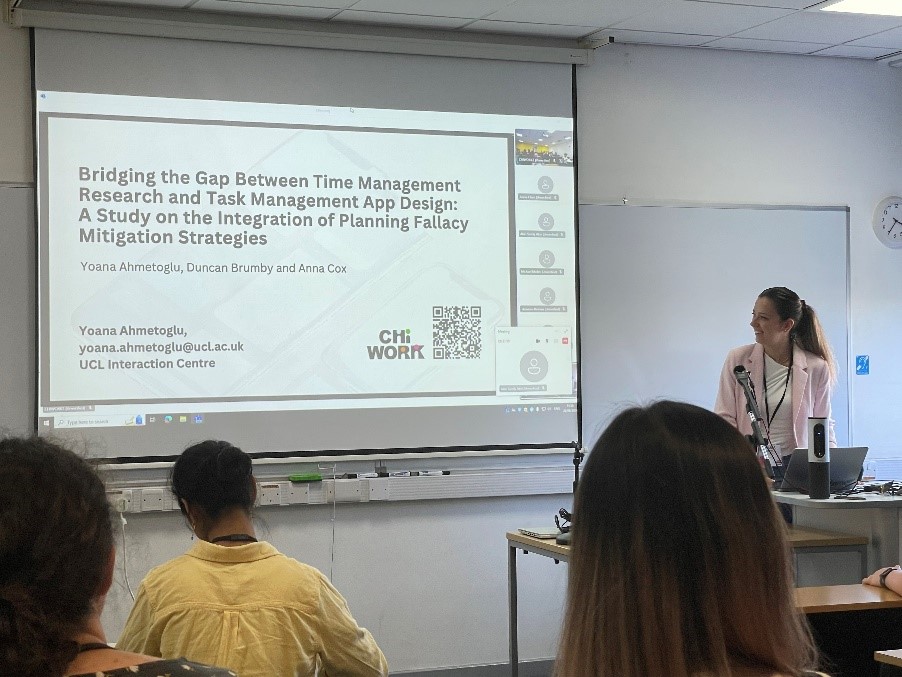
Figure 3. Yoana presenting her paper.
Interspersed among the paper sessions were poster and demo sessions, where I had the opportunity to present my poster on my PhD project titled “How to Alleviate the Peer Review Crisis: Exploring Future Designs and Supporting Tools to Improve the Quality and Efficiency of Academic Peer Review.” I engaged in conversations with attendees about the expected outcomes of my research, my proposed solutions for enhancing academic peer review, and we exchanged ideas on whether designing AI tools for peer review is a viable and beneficial approach.
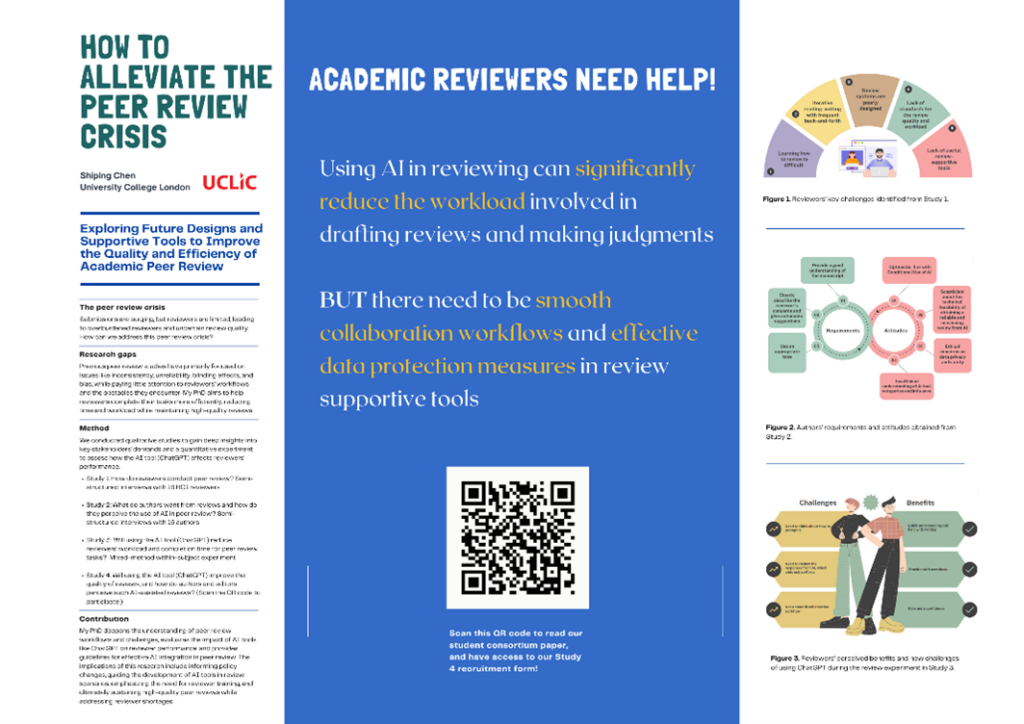
Figure 4. The digital version of my poster presented in CHIWORK 2024.
The panel sessions during the conference were also very insightful. We had a conversational panel at the first day, where my supervisors Duncan and Anna talked about the ChatTL;DR to get people to check the output of LLMs. We then had the Town hall at the last day, where the CHIWORK 2024 general chairs, Dr. Marta Cecchinato and Dr. Marios Constantinides, concluded this year’s conference. We also participated in a ‘co-writing’ session with the steering committee. Using a Miro whiteboard, everyone had the opportunity to contribute to the community values, express their ideas, and provide suggestions, further enhancing our sense of engagement and connection.

Figure 5. Photo taken during my secondary supervisor Prof. Anna Cox’ speech.
Finally, the closing keynote left a lasting impression. CHIWORK 2024 ended with the closing keynote, “The Future of Work: Can Workplace HCI Save (Us from) Generative AI?” delivered by Dr. Jackie O’Neill from Microsoft Research Africa. She presented research on designing worker-centric generative AI tools for gig knowledge workers. I particularly appreciated her discussion on the importance of designing AI systems as collaborators rather than competitors to humans. She emphasized the need to create interfaces and workflows that facilitate seamless human-AI interaction, ensuring that AI tools enhance collective intelligence within teams rather than isolating users from meaningful engagement with their work.
Feel engaged, Feel connected
Overall, my CHIWORK trip was fulfilling. The diverse and open exchanges during the conference truly made me feel engaged and connected. Daily coffee breaks and lunch conversations at the venue, as well as pub chats and dinners after the paper sessions, provided a relaxed environment for us to get to know each other better.
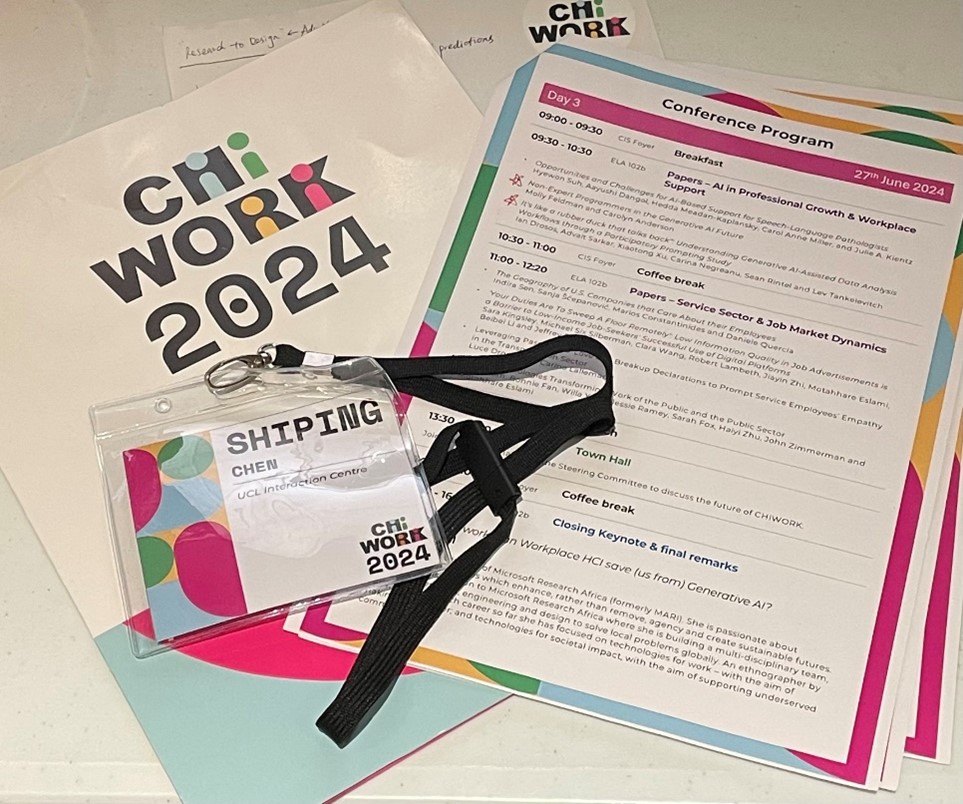
Figure 6. The beautifully designed conference agenda, note papers, and participant card for CHIWORK 2024 serve as memorable keepsakes from my in-person conference experience.
As a PhD student, CHIWORK made me feel fully involved, providing a fun, informative, and enjoyable experience. This wouldn’t have been possible without the hard work of the organisers and volunteers. Thank you all! I look forward to meeting again next year in Amsterdam!-
Attending CHIWORK 2024 – By Qing (Nancy) Xia
The 2024 CHIWORK conference took place last week at Northumbria University, up in Newcastle, and offered a great selection of interesting papers and discussions regarding the future of work.
This year, there were several papers which explored the topic of supporting workers not just in improving their productivity, but also considering factors such as ensuring workers’ autonomy and rights in the age of AI and worker wellbeing. In particular, I really enjoyed the exploratory work presented by Sowmya Somanath on designing technologies to support worker happiness and long-term satisfaction – an ongoing programme of work which I’m excited to follow. Yoana Ahmetoglu, one of my peers and good friend, also delivered an engaging talk on her paper regarding how time management apps could be better designed to reflect key strategies for supporting planning.
CHIWORK also offered a great platform for more exploratory research and reflections that inspired great discussions in the community. Several papers this year adopted a design fiction approach to explore different outlooks and possibilities of introducing AI in the workplace. Some of my favourite examples included Carine Lallemand et al.’s (2024)‘Trinity’, a thought-provoking fiction, imaginatively and immersively presented, in a future where every aspect of our individual and collaborative performances could be quantified and captured by AI, and the paper presented by Michael Muller et al. (2024), which raised important questions about the right of refusal when workers collaborate with organisational AI tools, and what our future may look like if human labour could be quantified and processed by AI just like any other piece of data. Beyond speculating about the future, there were also examples of new research methodologies for understanding human-AI interactions, such as the participatory prompting framework used by Ian Drosos et al. in their paper this year as well.
CHIWORK also included two interesting sessions that I particularly enjoyed. The first session was the Conversations panel, which involved two of my supervisors Professor Duncan Brumby and Professor Anna Cox presenting their alt.CHI work about the current state of academia and the place of AI within it. As a student, it was enlightening and interesting to observe how individuals within the community navigated their differing opinions on this topic and engaged in the debate. The second session was the Town Hall, which brought in-person and online participants together on a Miro board to brainstorm suggestions and ideas for future CHIWORK sessions. It was an interesting insight into understanding the ‘behind-the-scenes’ works of what defines a research community and how it all comes together.
Most exciting for me, as a PhD student, was getting the chance to meet and connect with fellow researchers and students who also worked in my field of interest – namely, the topic of user learning and expertise in the software. Meeting and chatting with Pranjal Jainand Molly Feldman and learning about their work really inspired me to reflect on my research ideas and approach in tackling my future PhD studies. There was also an impromptu opportunity to hop in and contribute to the conference itself – I ended up chairing the second session on ‘Inclusive and Accessible HCI’ on Wednesday, which was great for supporting my public speaking skills despite my initial nerves.
All in all, the conference organisers Marios Constantinides and Marta Cecchinato did a great job in getting the event together. I left CHIWORK this year inspired and excited to come back to Amsterdam for the next session in 2025!
My Work Experience at University College London Interaction Centre (UCLIC)
By Hywel Jenkins
During my five-day work experience at the University College London Interaction Centre, I had the opportunity to engage deeply with the realms of science communication, research inclusivity, and the integration of artificial intelligence in academic and professional settings. My work experience supervisor was Prof. Anna Cox. This post discusses my daily experiences, covering the activities I completed, the knowledge I gained, and the challenges I faced.
Day 1: Introduction and Exploration

On the first morning, I completed a brief tour of the UCL campus and the UCLIC office, which included a fire safety induction. This tour was not just to help me with orientation; it also provided a historical context, as I visited Jeremy Bentham, the founder of UCL. Learning about Bentham’s contributions set the stage for understanding UCL’s long-standing commitment to progressive education and research. Later in the morning, I watched several YouTube videos on science communication. These videos were important for laying the groundwork for my week’s projects, as they introduced me to the fundamentals of creating effective science communication artefacts. Initially, I felt nervous at the sheer volume of information and the tasks ahead, but this session helped mitigate some of my stress by providing a clear framework for approaching my assignments.
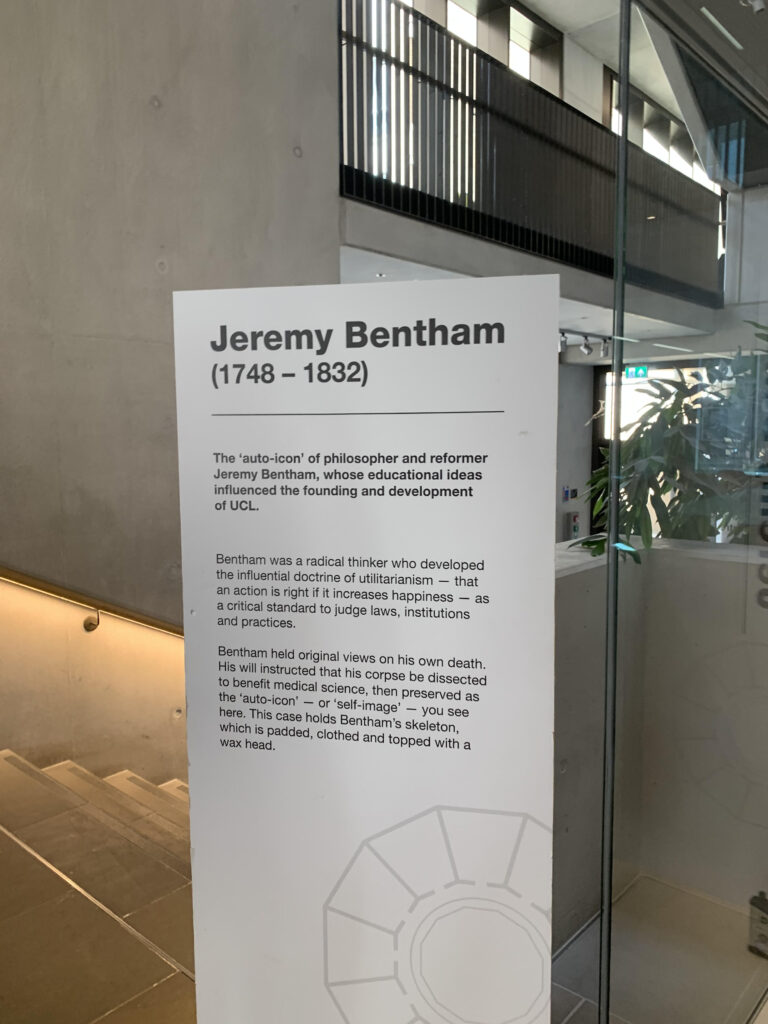
In the afternoon, I attended an event at the Equalities Research Centre, which focused on making research more equitable and inclusive. The session was interesting as it showcased the various initiatives within UCL’s brain sciences faculty aimed at fostering inclusivity. One thing I learned from this was the different impacts of various types of dementia on brain functions, such as memory and language skills.
Day 2: Blog Post Creation and Workshop Attendance
The second day began with downloading and reviewing the work of master’s students, which I would later feature in a promotional blog post for my Work Experience Supervisor. This task was both educational and demanding. I delved into diverse topics, including the effective use of large language models (LLMs) through prompt engineering, the benefits and challenges of the gig economy, and the integration of AI in the workplace. Furthermore, I attended a meeting with Yoana, one of my work experience supervisor’s PhD students, to gain deeper insights into her project. This meeting was important as I learned valuable information in it which I needed for my upcoming tasks.
In the afternoon, Anna had to assist with a workplace workshop, and I joined, observing from the back of the room. During this time, I utilised AI tools like ChatGPT to draft the promotional blog post. This experience was particularly beneficial as it demonstrated how AI can streamline the creative process and enhance productivity. However, staying focused amidst the ongoing workshop was a bit challenging due to the long time period that it went on for.
Day 3: Finalising Blog Post and Starting Information Page
On the third morning, I finished the blog post about the master’s students’ work. This task helped me to improve my skills in prompt engineering, and my overall skills in using AI tools for creating content. Following this, I attended a team meeting that offered further insights into the projects of Yoana and another PhD student, Shiping. The information I learned here was important for my second major project of the week.
In the afternoon, I began working on creating an information page for Anna’s website, which detailed the ongoing research projects within her research group. This involved finding information from different sources I had come across during the week, including my notes from meetings, posters, and research papers which Anna gave me. Later, I attended a seminar by a guest speaker from America (Prof Orit Shaer) who discussed the use of virtual reality (VR) for remote work. The seminar (which you can watch on YouTube here) highlighted the benefits of VR in enhancing focus, reducing stress, and improving convergent thinking in team settings. The day concluded with another exploration of the UCL campus, in order to go and see the previous homes of UCLIC within UCL.

Day 4: Continuing Projects and Starting Work Experience Report
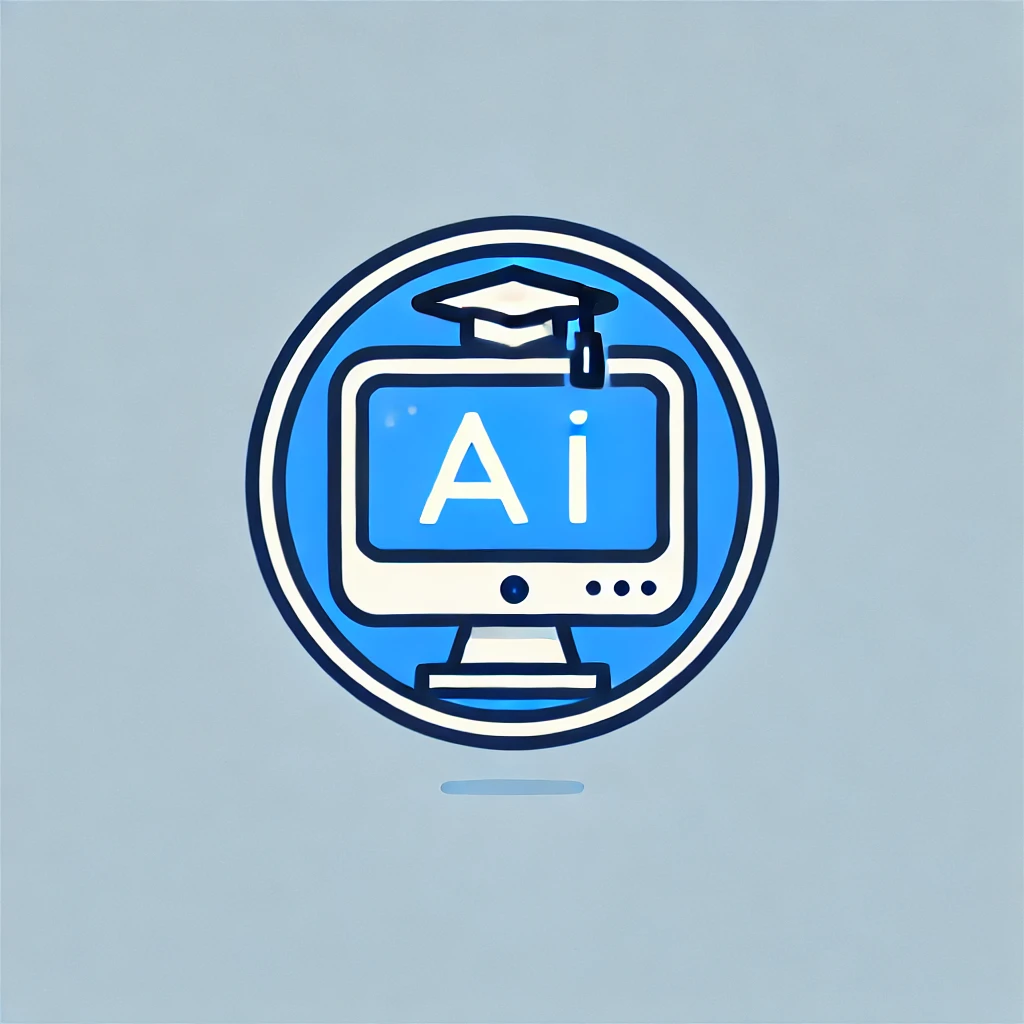
The fourth day was primarily focused on continuing and nearly completing the information page about my work experience supervisor’s research group, using AI to help me make the logo opposite for these projects. Working from home presented some concentration challenges, but I managed to stay focused and learned many things from the ongoing research projects in the research group, including about the Research compliance buddy being created and the research on the use of AI tools in academia.
In the afternoon, I began working on my final project, this report writing about my work experience experiences at UCLIC. This involved reflecting on the week’s activities and thinking about what I had learned this far into my week. I also continued to refine my skills in using AI tools to aid in report writing. Concentrating for extended periods without breaks was difficult, but I managed to push through and make most of the progress that I needed to on this task.
Day 5: Finishing my tasks off on the final day
My morning was primarily focused on completing the remainder of the tasks which I had left. I worked on feedback from my supervisor, learning how to write more engaging texts and how to more easily proofread my work, by using the text to speech feature in Microsoft word. Following this work, I began to work on some ideas for social media posts to act as an advertisement for a survey that my supervisor is running.
Following my lunch break, I continued to work on these twitter posts, trying to make the most eye-catching and interesting advertisements to try and draw in the target audience of UK academics, lecturers and PhD students, leveraging both LLMs for ideas and AI image creation models such as Dalle 3 to achieve this. Following this, Anna showed me how to add the different artefacts that I had created over the week to word press, the tools she uses to create her website so that my work could appear on the website.
Conclusion
My work experience at UCLIC was both enriching and insightful. It provided a comprehensive understanding of the intersection between science communication, research inclusivity, and AI integration as well as what life working at a university is really like. Despite initial nervousness and challenges due to my unfamiliar environment, I successfully completed my assigned tasks. This experience significantly enhanced my skills in using AI tools, understanding inclusive research practices, and effectively communicating scientific ideas. It has been a pivotal experience that has contributed greatly to my personal and professional growth, helping me to better consider my career and educational decisions for the future.
Adaptive, Sociable and Ready for Anything: Undergraduate Students Are Resilient When Faced with Technological Change
Elahi Hossain, Anna L. Cox, Anna Dowthwaite, and Yvonne Rogers. 2024. Adaptive, Sociable and Ready for Anything: Undergraduate Students Are Resilient When Faced with Technological Change. Proc. ACM Hum.-Comput. Interact. 8, CSCW1, Article 198 (April 2024), 32 pages. https://doi.org/10.1145/3653689
The digital age has significantly altered the university experience, pushing more student interactions online and creating new dynamics in social relationships. In this paper we delve into how undergraduate students navigate and adapt to this digital shift, offering insights into their resilience and adaptability.
Key Findings:
- Adaptation to Digital Shifts: The study found that undergraduate students are remarkably adaptable to extensive digital learning environments. Despite the challenges posed by a primarily digital university experience during the COVID19 lockdowns, students utilized various digital platforms creatively to maintain and forge new social connections.
- Loss of In-Person Interactions: One major challenge highlighted was the loss of casual, spontaneous interactions available in physical settings, which are crucial for building deeper social connections. Digital environments often fail to replicate the nuanced interactions that occur naturally in person.
- Strategic Use of Digital Tools: Students demonstrated strategic use of digital tools to overcome these challenges. They chose specific platforms that supported richer, more personal interactions, such as video calls over text messaging, to better emulate face-to-face interactions.
- Building and Maintaining Relationships: The research emphasized the students’ ability to maintain pre-existing relationships and build new ones through digital means. While digital tools are not always perfect substitutes for in-person interactions, they provide vital links that help students navigate their social worlds in digital learning environments.
- Design Recommendations for Digital Learning: The paper also offers design recommendations for future ‘metaversities’ — digital campuses where interactions are more immersive. Suggestions include enhancing the richness of communication tools to better simulate in-person dynamics and designing digital spaces that promote spontaneous social interactions.
Conclusion:
This study showcases the resilience of students in adapting to a digital university environment. It highlights the importance of designing digital learning tools that support natural, rich social interactions to foster a sense of community and belonging among students, which is crucial for their social and academic success. The findings are a testament to the adaptability of the current generation of students, who are ready to navigate the challenges and opportunities presented by the digital transformation of higher education.
Talk: Games for Academic Life
Prof Anna L Cox gives keynote speech “Games for
Academic Life” at GALA 2020, Games and Learning Alliance conference.
A copy of the slides is available for download.
Academic Life in 2019
Today many of my colleagues are on strike. I’m not joining them today because I am on leave to attend the funeral of a university friend who died a few weeks ago in his mid-40s.
His sudden and unexpected death has shaken me. It’s frightened me more than other events this year – two of my fittest and healthiest friends had heart attacks. If these things can happen to them, they can happen to me. It has made me want to refocus my life and think harder about what is important. I don’t want to have regrets.
I spend most of my life at either 100 miles an hour or so exhausted that I can’t move – I literally had no option but to spend 2 hours yesterday napping on the sofa. I was completely shattered. This kind of life isn’t good for my mental or physical health. It’s not how I want to live. It makes me scared that I’ll be the next person in my friendship group to have a major health problem. And that will have serious consequences for my family.
Despite the fact that I’m on leave today, I have spent the morning doing work activities. The lines between work and non-work are very blurred. It’s really effortful to create and maintain the boundaries between them when there is so much to do.
Academic life is engaging and exciting and full of responsibility. I need to ensure my taught students get a good experience, can pass their assessments and receive useful feedback so they can improve their learning. I have PhD students to train and support as they learn to deal with the frequent rejections that come from reviewers. I have grants to write so that my post-docs have jobs – without funding they will be made redundant. I have made a commitment to try to make my institution a better place for everyone to work in my role as Vice Dean Equality, Diversity and Inclusion. And I have promised to help those in my academic community by reviewing papers and organising conferences and to foster links between universities and schools by being a school governor. All of these activities give me a sense of reward and accomplishment. I’ve made all these commitments because I think they’re important and want to keep them. In addition there are frequent requests for reference letters to support people getting new jobs or going for promotion. And from members of the media who want comments which could help the public understand and engage with science. And other things that I can’t even remember right now.
No wonder I am exhausted.
But I’m not alone. This week Mary Beard tweeted…..
“Can I ask academics of any level of seniority how many hours a week they reckon they work. My current estimate is over 100. I am a mug. But what is the norm in real life. ?” https://twitter.com/wmarybeard/status/1198351088832962560
Responses seem to fall into a few categories:
· Accusing her of lying: People find it hard to believe that can be telling the truth – who can work that number of hours?
· Shaming her for having privilege: People accusing her of perpetuating a culture of overwork and unnecessarily increasing the competitive culture within academia
· Sympathy and acceptance: People who recognise that they’re in a very similar position
UCL’s standard working week is 36.5 hours excluding meal breaks. Two of my colleagues shared the outcome of their attempts to track how many hours they’ve worked this year. By the end of August they had already worked their full annual allocation of hours. They work around 55hrs per week on average. So September to December they will work for free. Not standard weeks but still averaging around 55hrs per week. By the end of the year they will have worked an extra 50% above their contracted hours. I think this is common. It’s very difficult to say no to the endless requests or to deal with the guilt of letting someone down. Instead we put our own mental and physical health at risk, we do the work of 1.5 people, and our employers continue to take advantage of us.
Last year, in 2018, I went on strike along with many of my colleagues. As a result I lost a substantial amount of pay. Whilst this meant that some of lectures were cancelled and students were impacted, the reality is that I worked throughout the strike period. I worked a standard week as well as spending time on the picket line and on a march.
Some will say that my actions undermined the strike action by minimising it’s impact. But my actions were necessary to support my own mental health. I couldn’t deal with the stress of a huge pile of work that would all have to be done in the weeks after the strike. The reality of academia is that if you are away on leave for any reason, no one covers your job for you. You just have to work harder and longer afterwards.
During this strike period I don’t have any teaching duties. Even if i did, going on strike seems like an ineffective form of protest – it might hurt our students in the short term but it leaves untouched those who have the authority to improve the situation for all university staff. I’m not sure whether I’m going to strike in the coming days. This is certainly a time for reflection about what matters.
Sabbatical thoughts on productivity, the planning fallacy and recovery – month 2 of the commitment calendar
Following my previous post on the commitment calendar I was asked to share the spreadsheet that I am using to help me get a sense of what I have committed to do each month. The link to that is here.
This is now the second month of using it. I sat down on the morning of the first working day of the month to plan out what I was going to get done, and when that was going to happen. I have found it easiest to use half days as the smallest unit. Coming up with the list of stuff that has to be included takes a few steps:
1) Standard predictable things like scheduling some time each week to review my to-do list, plan what needs to be done, update this spreadsheet, schedule stuff in my calendar, etc. I’m scheduling half a day a week for this. The first one of these in the month is used for planning the rest of the month but it’s not clear what the rest of these slots will be used for yet. Sure, I’ll need a bit of time every week to check my to-do list etc but I hope I won’t need half a day a week. This will allow for a little slack in the schedule. I am also being explicit that I need time to do email. I am blocking out half a day a week to get my inbox to zero and respond to messages and do small admin tasks.
2) Then there is the stuff that will vary depending on what your roles are as an academic. I’m including supervision time: how much time you devote to this will depend on how many students you have but need to cover all the time spent on face to face contact, reading and commenting on drafts, etc. I’ve also added in time for teaching (to cover preparation, contact time and marking) and time for citizenship/admin roles such as sitting on committees and leading programmes.
3) Stuff that’s happening this month only – this will be things like attending a conference or taking some holiday.
The next thing that happened was I realised just how over-committed I was for the month. As a result I decided that there were some things that weren’t going to happen this month. Having to make hard decisions and accepting that I can’t get everything done that I might like to has made it easier to say no to other requests that have come in over the past week.
I have found it useful to schedule half day slots in my diary that relate directly to the commitments so i know when I am going to get each of these things done. This is helping me see what can get done in half a day (and what can’t!). For example, is half a day enough time to read a paper and write a review for it? I am hoping that this provides me with more insight into how long it takes you to do different things so it is easier to plan with more accuracy (though it’s well known that we find it very difficult to avoid being overconfident about what we can achieve in a given time https://en.wikipedia.org/wiki/Planning_fallacy ) Even engaging in this planning task has helped me realise that there are some things that I can’t do as early as I would like.
So far this week my 3 working days have been MUCH longer than I had wanted or planned for them to be. This suggests that I’m still overestimating what can be done in a given amount of time. It has also meant that today (Thursday) I’ve been much less productive than I wanted to be and have struggled to motivate myself to do the things I had planned to do. Hopefully tomorrow I will have recovered enough to have the energy to catch up with the things on today’s list that haven’t been finished.
Reflections on a writing retreat
One of the to-dos on my sabbatical bucket list is to submit a particular grant proposal I have been slowly working on with two colleagues. We all work at different institutions and it seemed like a great idea to find an opportunity to get our ideas down on paper – preferably whilst we were co-located and away from our usual places of work.
Earlier this year I discovered that Maureen Michael from Room For Writing was leading a writing retreat to be held in May. I asked my two colleagues if they would be interested in going. I thought the structure provided by the retreat would give us the best chance of getting it done as we would be forced not to spend the whole day talking! A few weeks later we were all booked to go.
We scheduled a skype call a couple of weeks ahead of the retreat to refresh our memories and make sure that we still agreed on what we wanted to do. Our planning included breaking down the writing of the proposal into discrete chunks and scheduling them each for a particular time slot.
The day of the retreat arrived. Two of us arrived in Glasgow early and spent the morning talking about the ideas we had for the project.
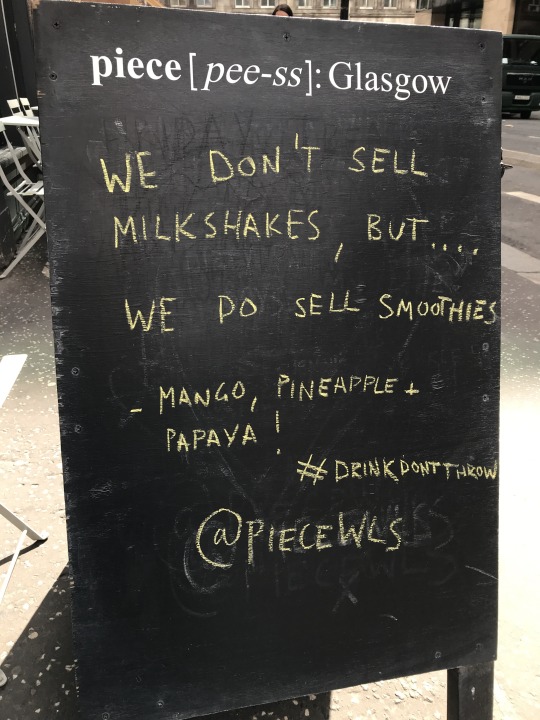
By lunchtime the three of us were together and some more chat ensued. At 3pm we were met by a taxi and 3 other retreaters for the journey to the Black Bull Hotel in Gartmore, about an hour outside of Glasgow.
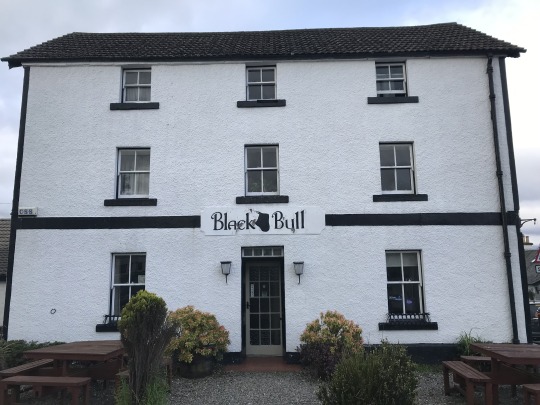
After tea and coffee, and introductions, twelve people sat down to start a 5 minute free writing task in which we had to write in full sentences (but without editing) and answer 2 questions: for the writing task we were going to focus on, what had we already written for it and what did we want to achieve by the end of day 3, the end of day 2, and the end of the coming 60 minute session?
We then formed pairs and talked for 5 minutes each about what we were going to write. We were instructed to ask questions to help the other person to articulate a very clear goal. Sixty minutes later we had completed our first writing slot and we had written three work-packages. We were rewarded with a fantastic three course dinner.
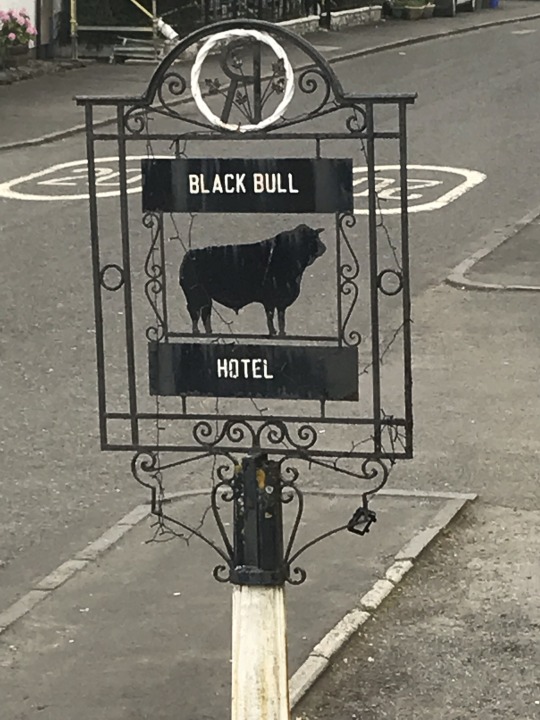
The Black Bull Hotel in Gartmore is a really charming place, with humorous staff and an amazing cook. Breakfast consisted of fruit, cereal, porridge, and everything you would expect from a full Scottish breakfast. Elevenses were freshly baked scones or gorgeous fluffy pancakes served with jam, cream and maple syrup. Lunch on day 2 was salad and jacket potatoes with tuna and prawns. And on day 3 was fajitas and salad and quiche. There was also afternoon tea on all three days that included things like this delicious and beautiful “cake object”.
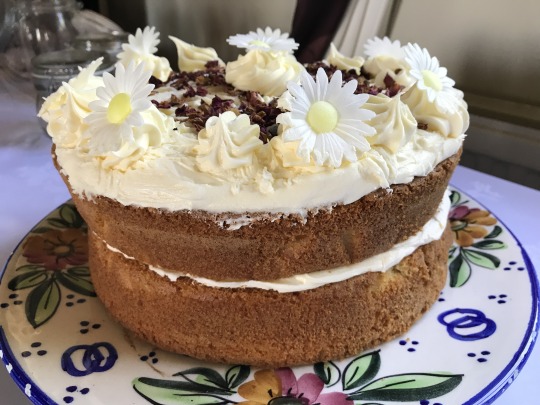

The retreat was structured to include 8 writing sessions that each lasted 60-90 minutes. The morning and afternoon breaks lasted 30 minutes and lunchtime was 90 minutes that included strong encouragement to take a walk or go for a run.
Over the course of the three days we completed 10.5 hours of focused writing, went on 5 walks, and were very well looked after. I have come away from this experience feeling incredibly productive (and consequently a bit tired!) but also cared for, and reminded of a slower way of working. Maureen is very skilled at creating an atmosphere in which being focused and productive feels easy. She also carefully guides you through re-evaluating your goals so that, at the end of the process, you focus on your successes and achievements and have insight into how to set realistic goals for writing.

So how did it go? We we wrote a grant proposal! We have about 9000 new words that have been revised by each of us several times so they’re of reasonably high quality. To be completely honest we have achieved more than I had dared to believe was possible in the time.
We used the breaks to relax but also to chat about progress and to share ideas about how to develop the ideas in our proposal. That meant that, compared to other participants at the retreat, we probably “worked” through the breaks rather than using them entirely for recovery.

That said, the process didn’t feel frantic or like we were under pressure but felt relaxed and was quite unlike my usual working days. I don’t usually take breaks when I’m working and sometime even miss out on lunch. I know it’s not good for me but somewhere between being immersed in my work and under pressure to get lots of things done it’s been an easy habit to develop. I’m going to try to change that and see if I can schedule substantial breaks in my day. I’m interested to see how that impacts my work and wellbeing (though perhaps I will eat less cake than when in Gartmore!).
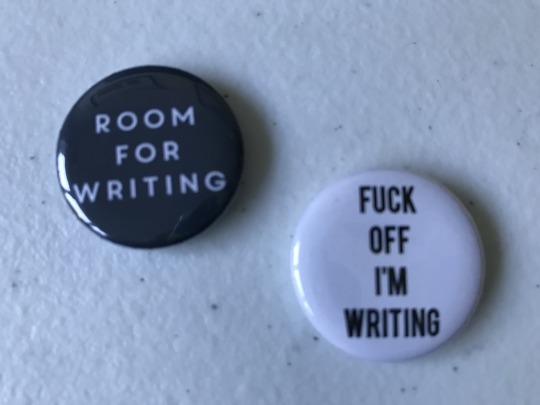
If you’re interested to know more about structured writing retreats like the one I attended then you can read Rowena Murray & Mary Newton’s paper here.
You can find more information about Room For Writing on their website.

